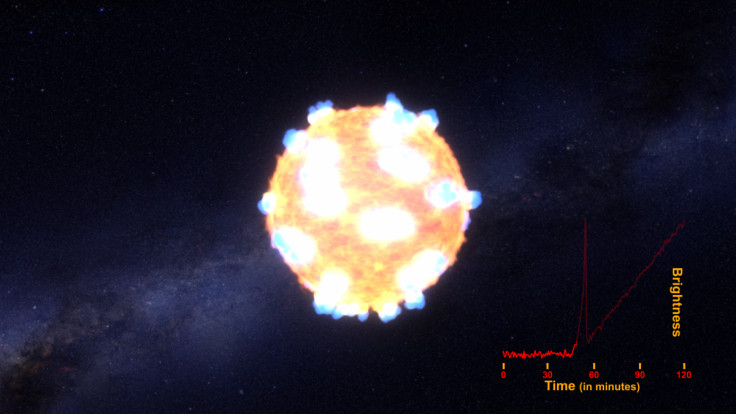
Victor Buso, an amateur astronomer from Rosario, Argentina has captured the stunning sight which features the birth of a supernova. The 58-year-old astronomer caught the birth of the supernova on September 20, 2016, when he glanced at the galaxy 'NGC 613'.
After taking a series of short exposure images, Buso took a look at his work. Upon initial analysis, he found a bright point at the end of one of the galaxy's spiral arms. He noted that this bright point was not present in the previous images captured.
Buso soon contacted Sebastián Otero, a member of the American Association of Variable Star Observers to work out a plan which should be followed to unravel the mystery of the strange bright point.
The amateur astronomer later looked up to the skies to verify whether the object was shining like a supernova, and surprisingly, he was pulled to a state of ecstasy to witness a beautiful supernova now known as SN 2016gkg.
"I chose the galaxy by chance but, among those in that region of the sky, it has a beautiful form with looping clouds—bright and dark," Victor Buso told Newsweek. Buso also said that he had read somewhere regarding the appearance of supernovas in spiral galaxies like NGC 613.
This is for the first time that anyone has photographed the initial flash of a supernova, a phase which lasts for minutes. This lucky find features the sudden brightening caused by a shock in the star's core; a process that had been theorized before by experts, but never observed or picturized. The study report has been published in the journal Nature.
"This is the first confirmation of the existence of this phase, which is really in agreement with the models. We actually think this is the first time an observer recorded the appearance of a supernova literally on camera. Some supernova has been discovered hours after the explosion. But, Victor Buso caught the exact minutes when the supernova was being born" said Melina Bersten, an astrophysicist at the Instituto de Astrofisica de La Plata in Argentina and the lead author of the study.
Gaston Folatelli, an astronomer at the Instituto de Astrofisica de La Plata, and the co-author of this study said that capturing the birth of a supernova is absolutely a tricky procedure. According to Folatelli, the flash from a supernova's shock breakout phase will last only for a short period of time, and the only way to capture the moment is by observing the right galaxy at the exact moment that the explosion occurs.









